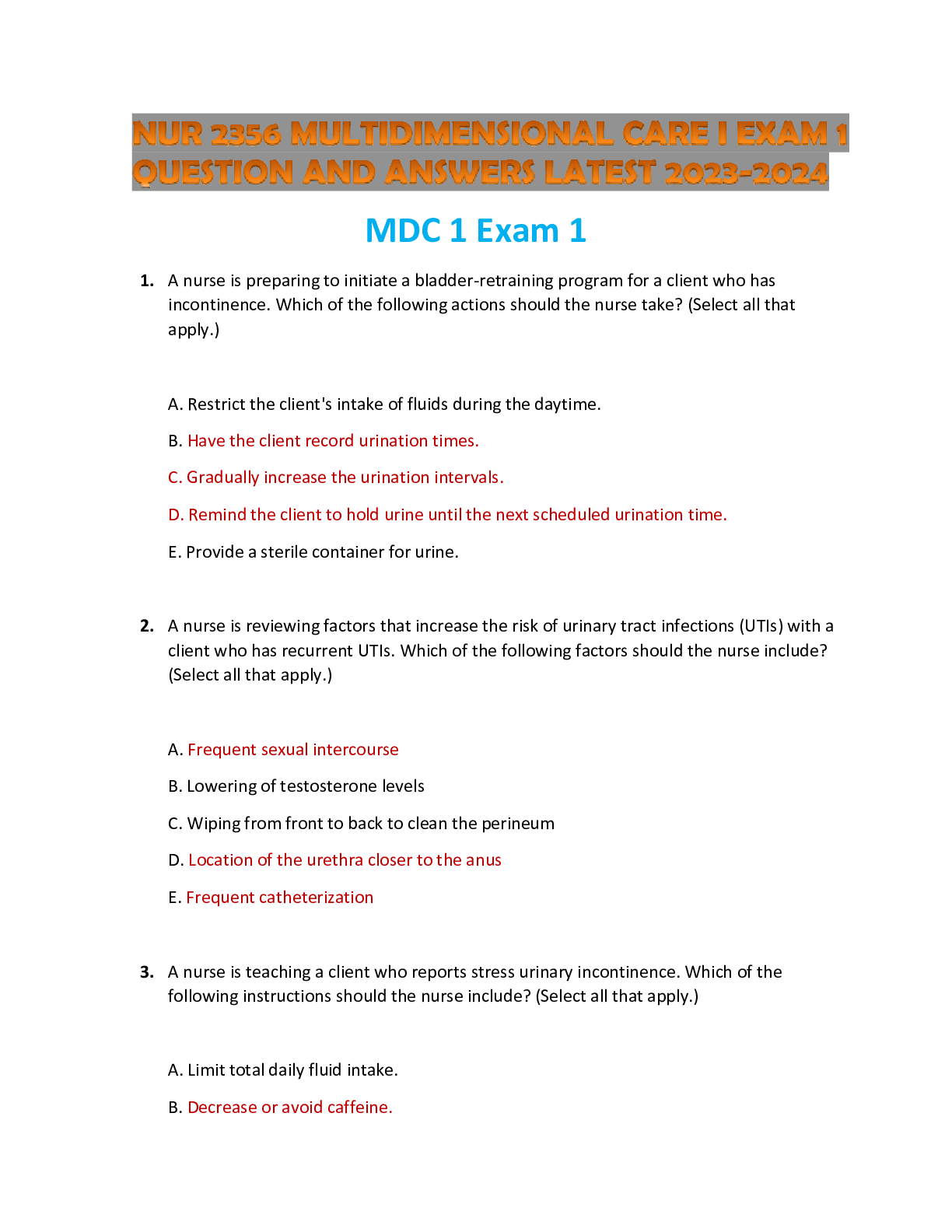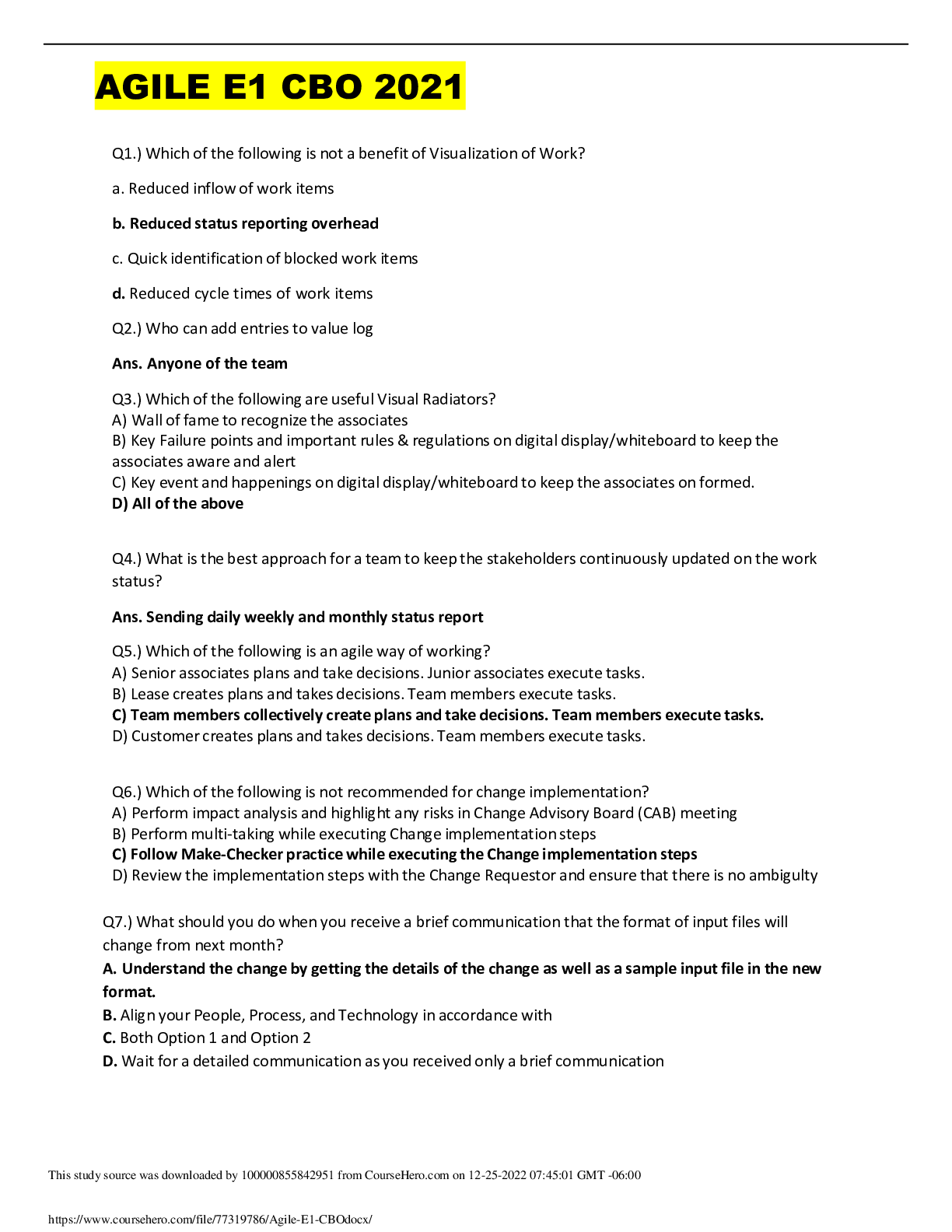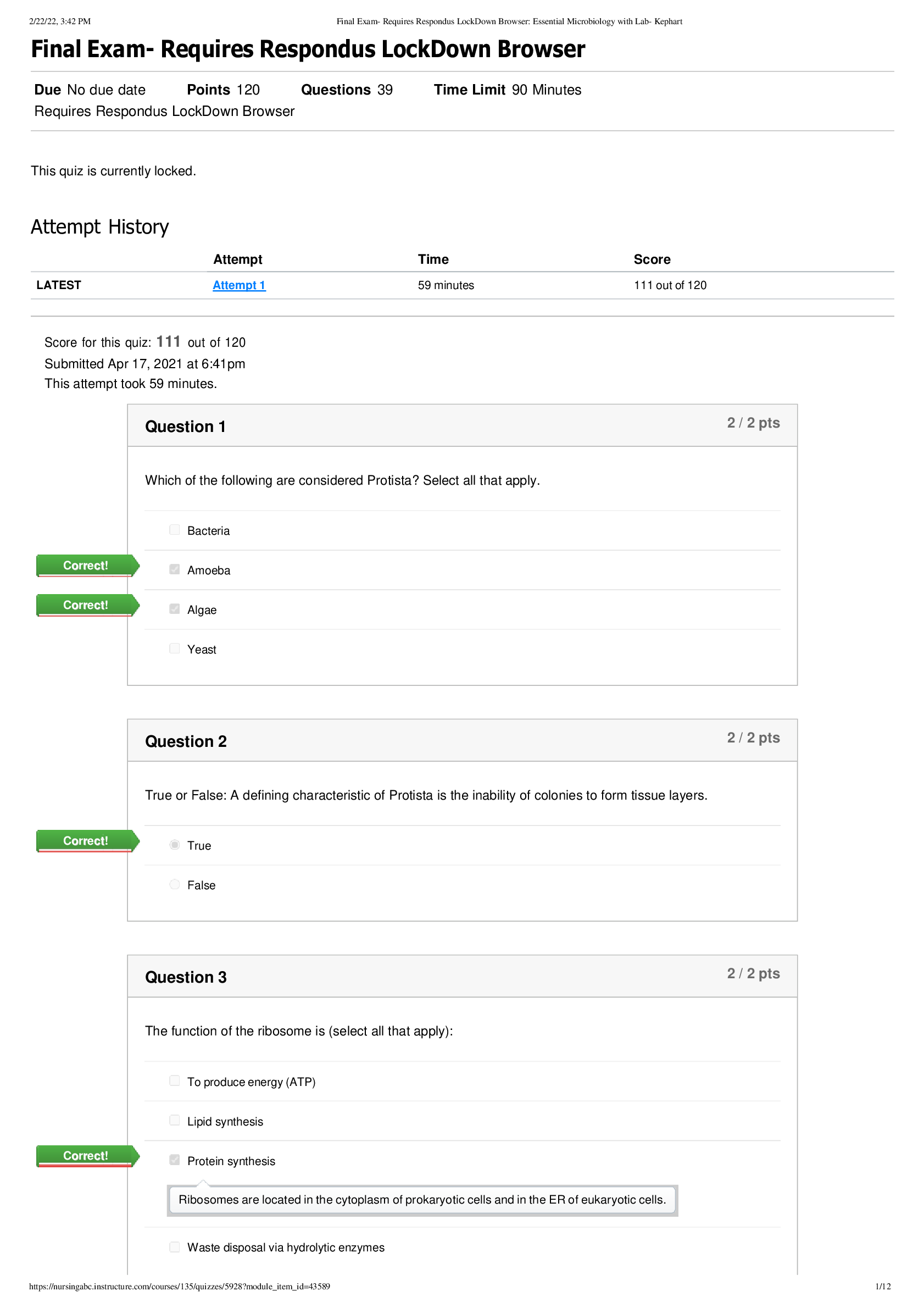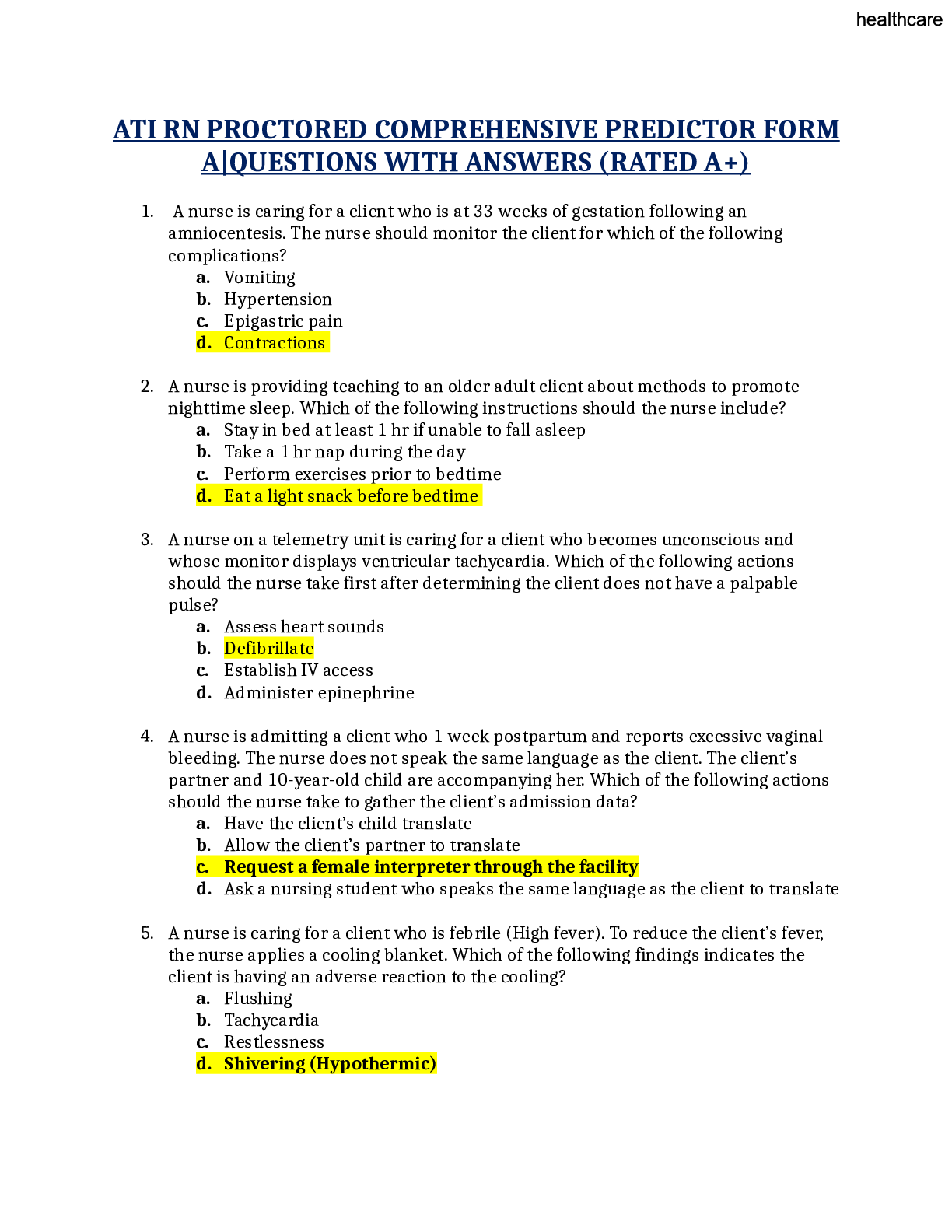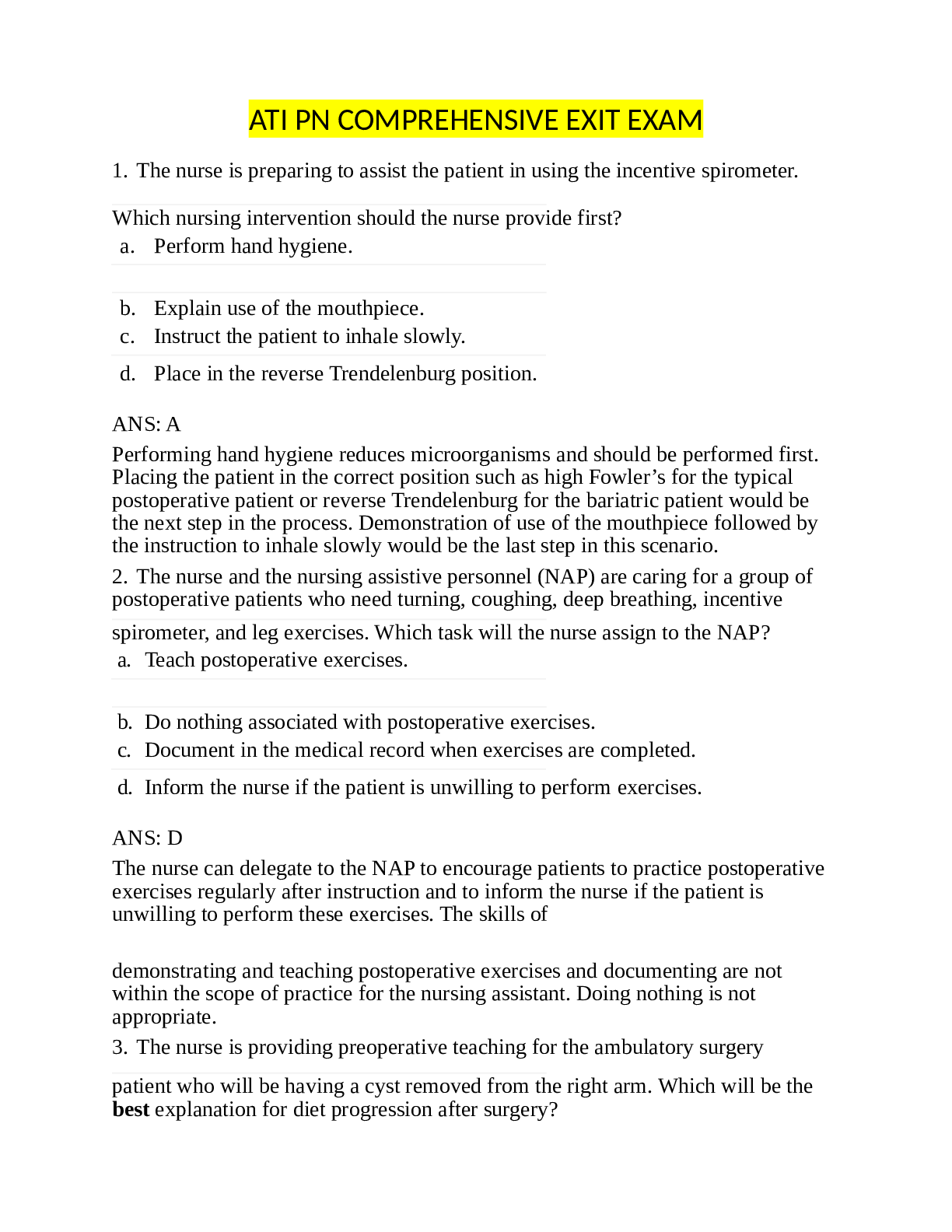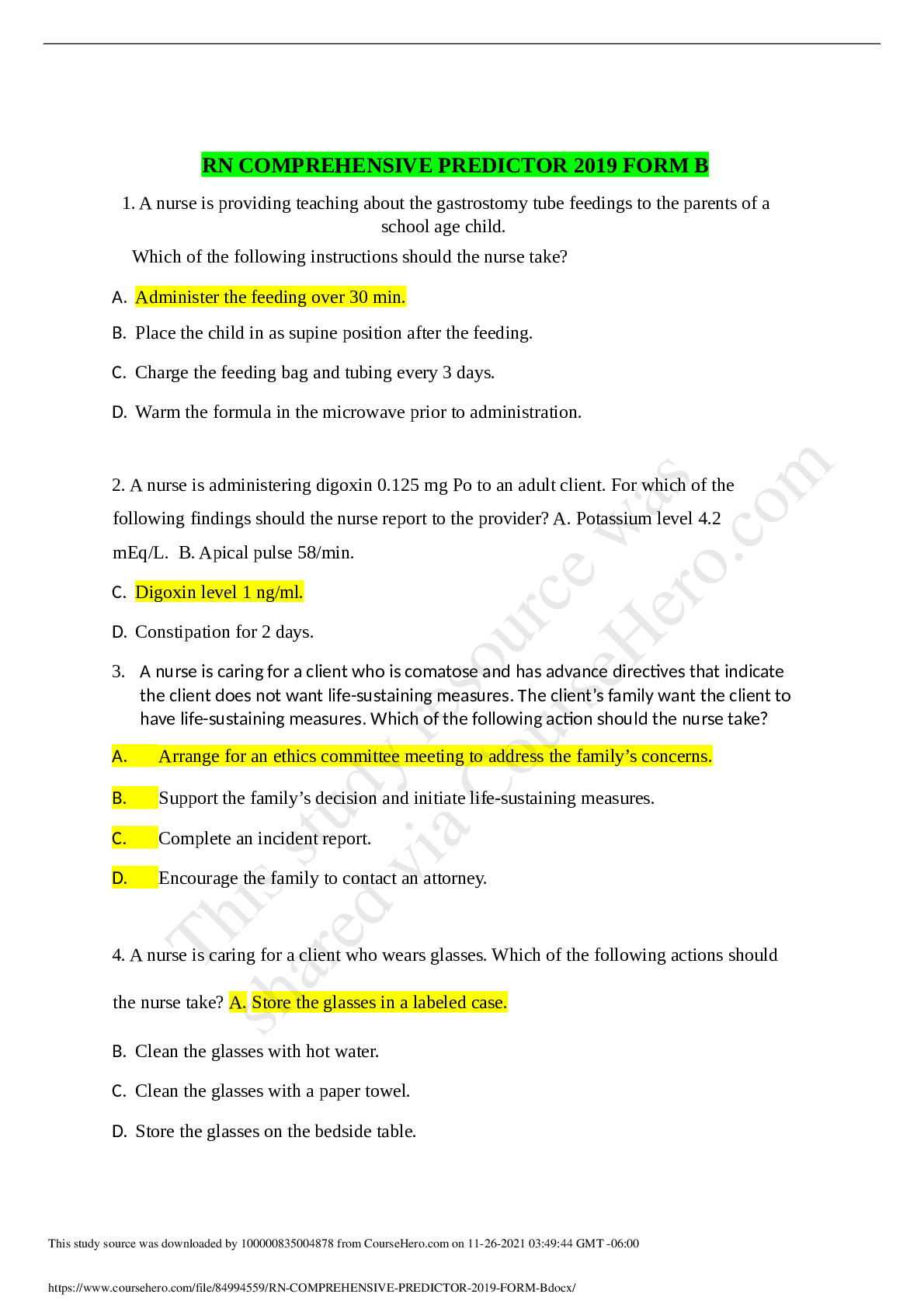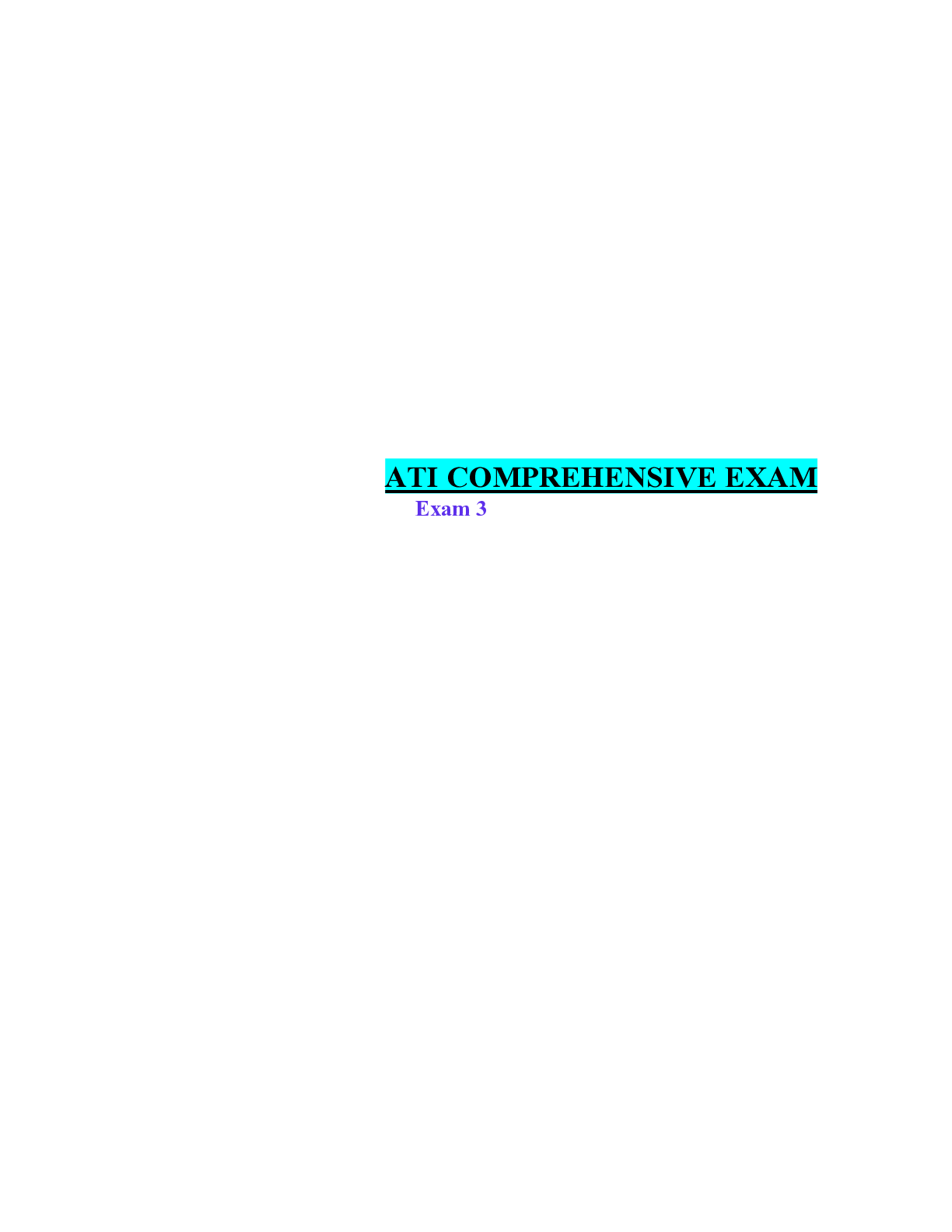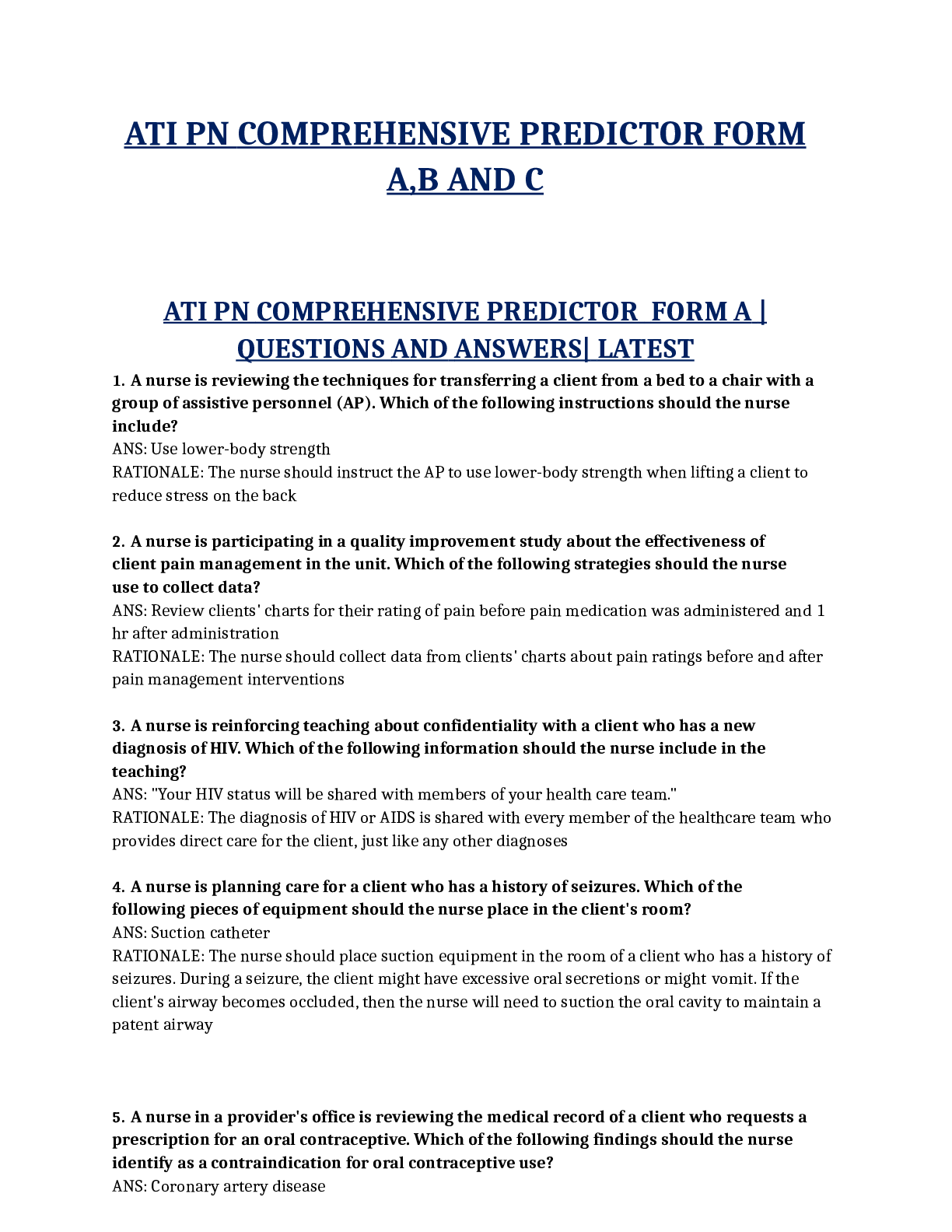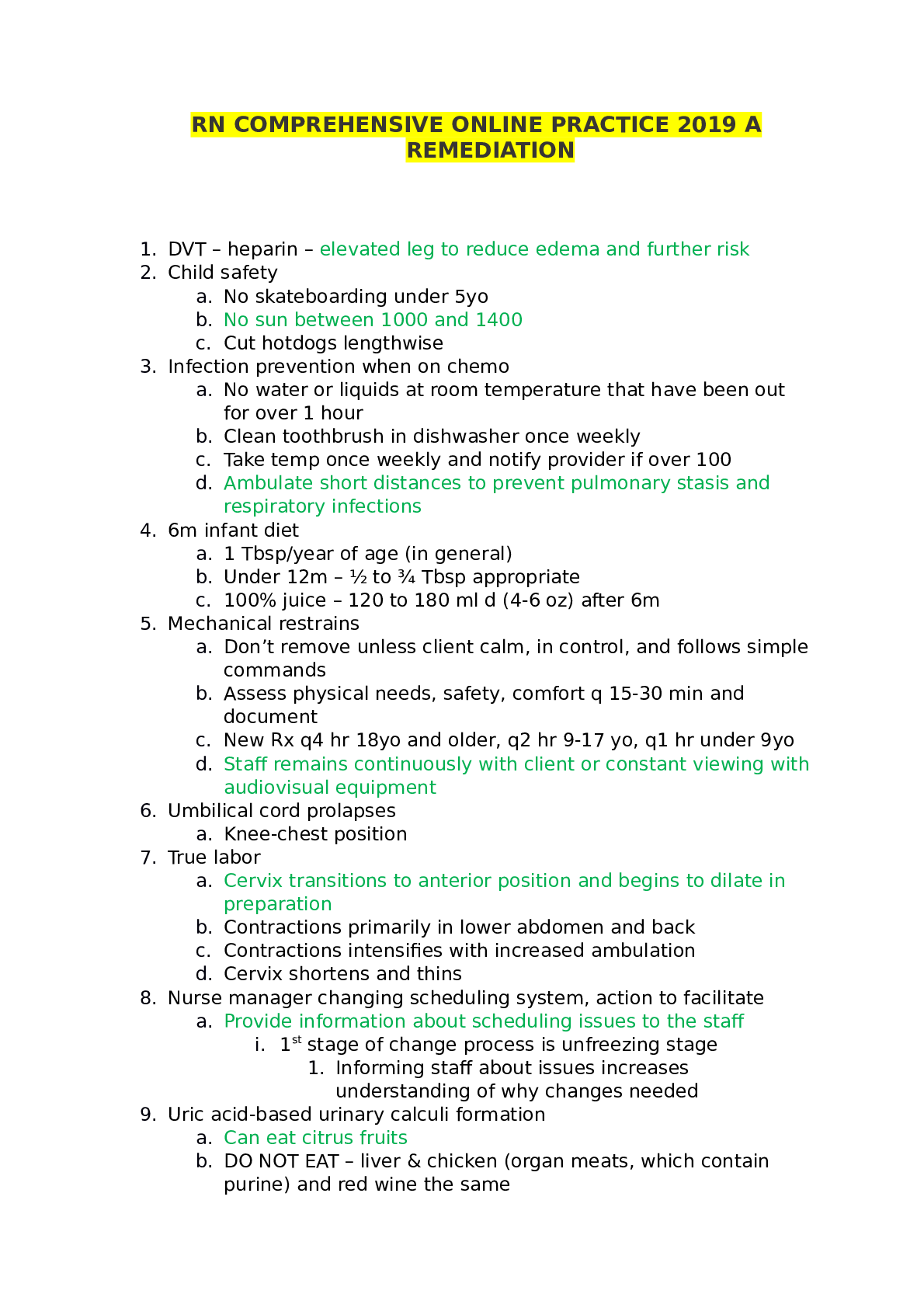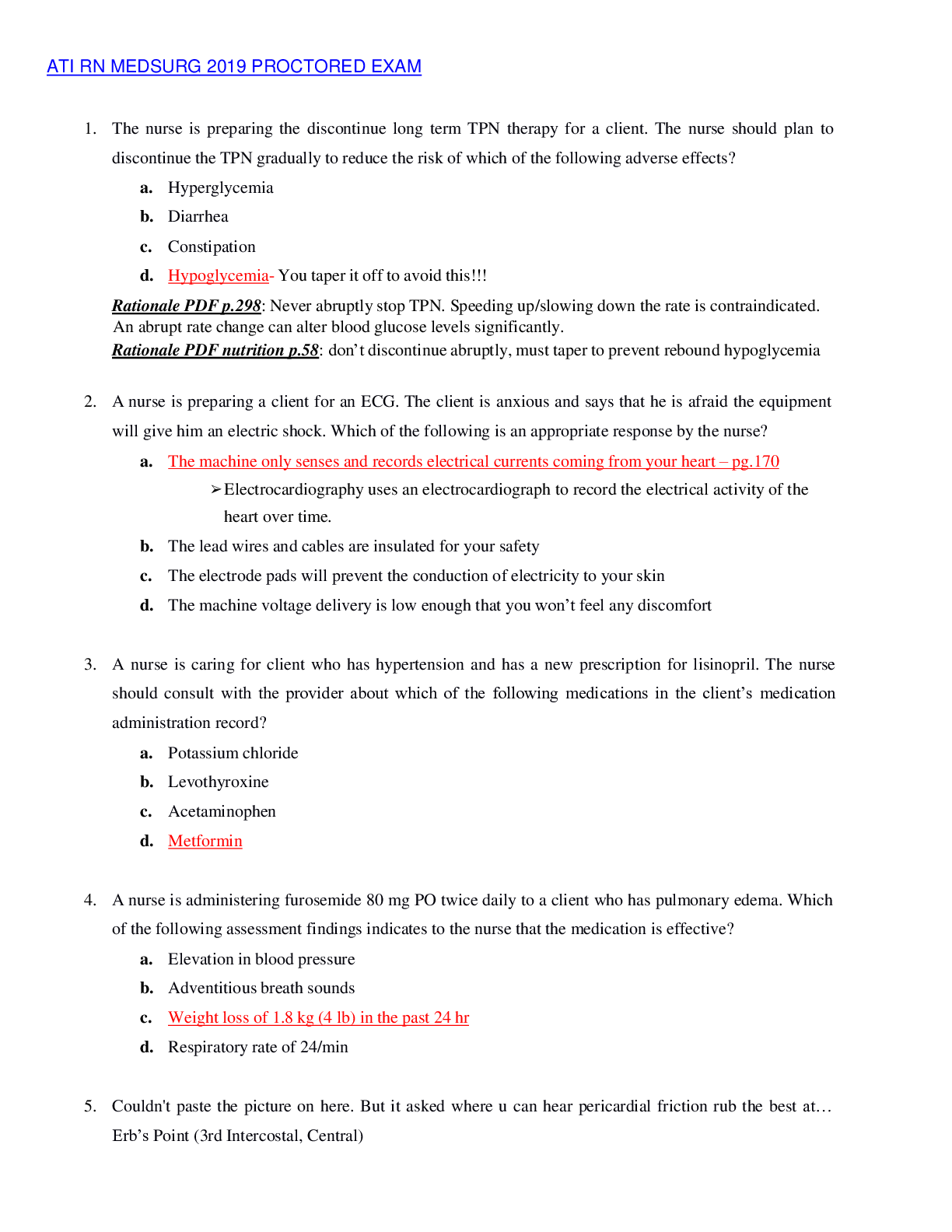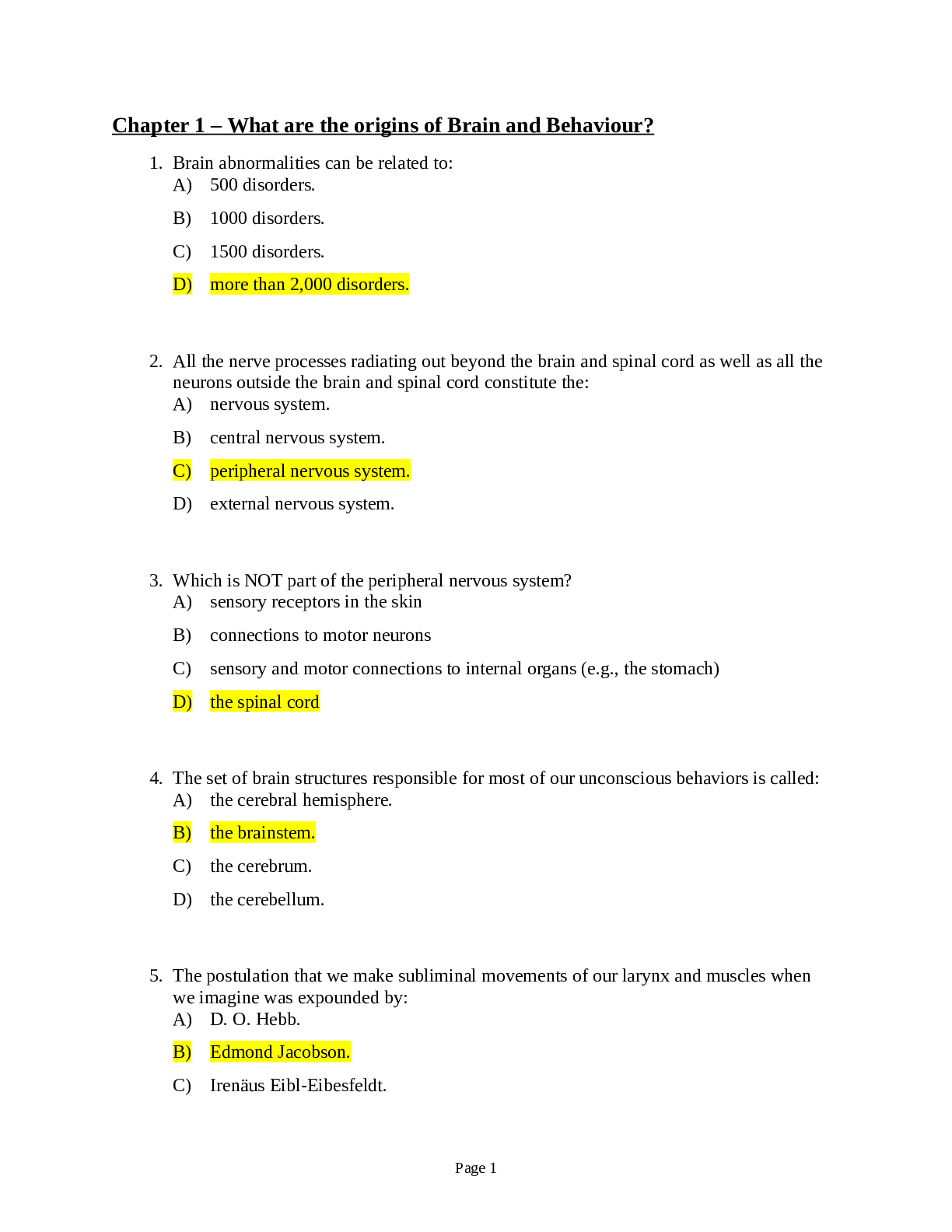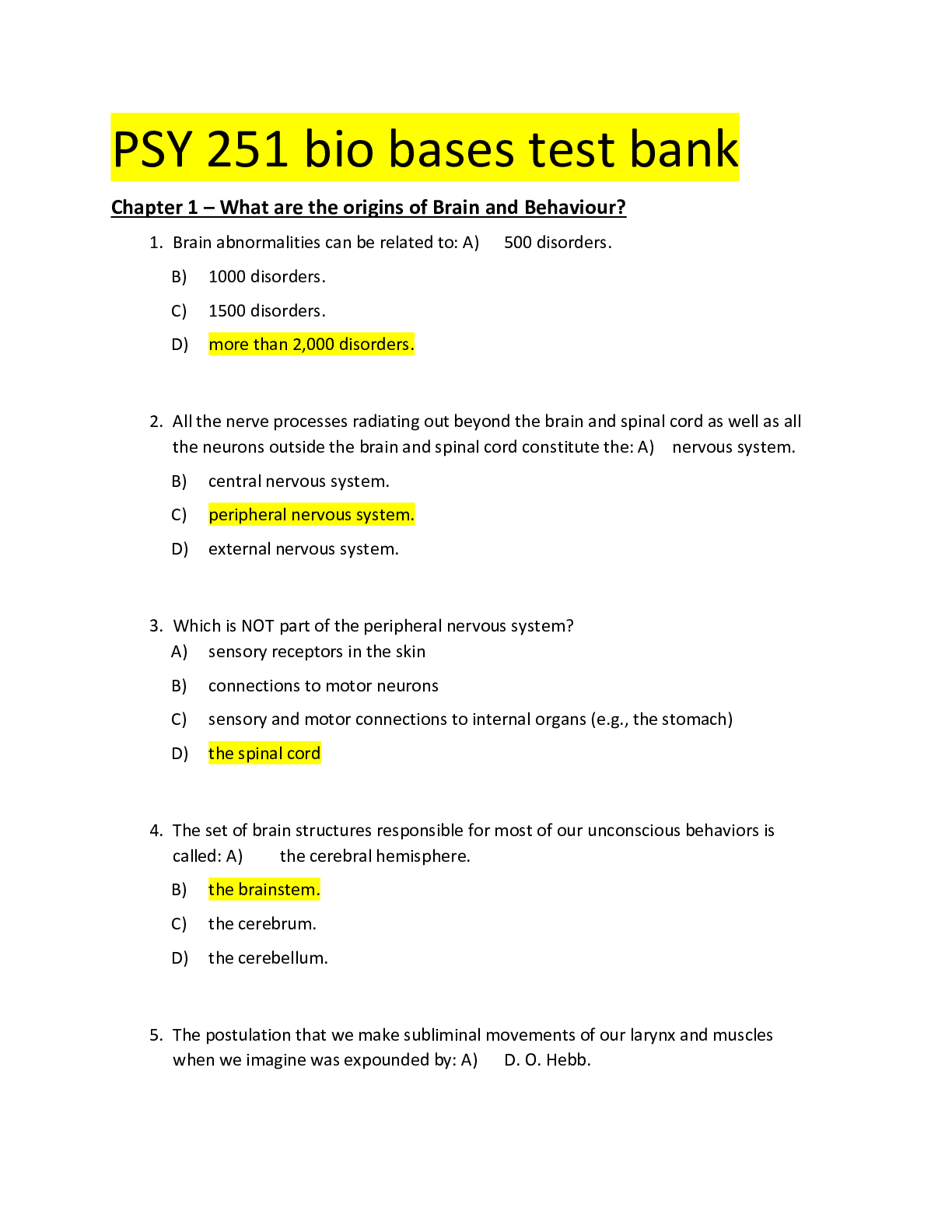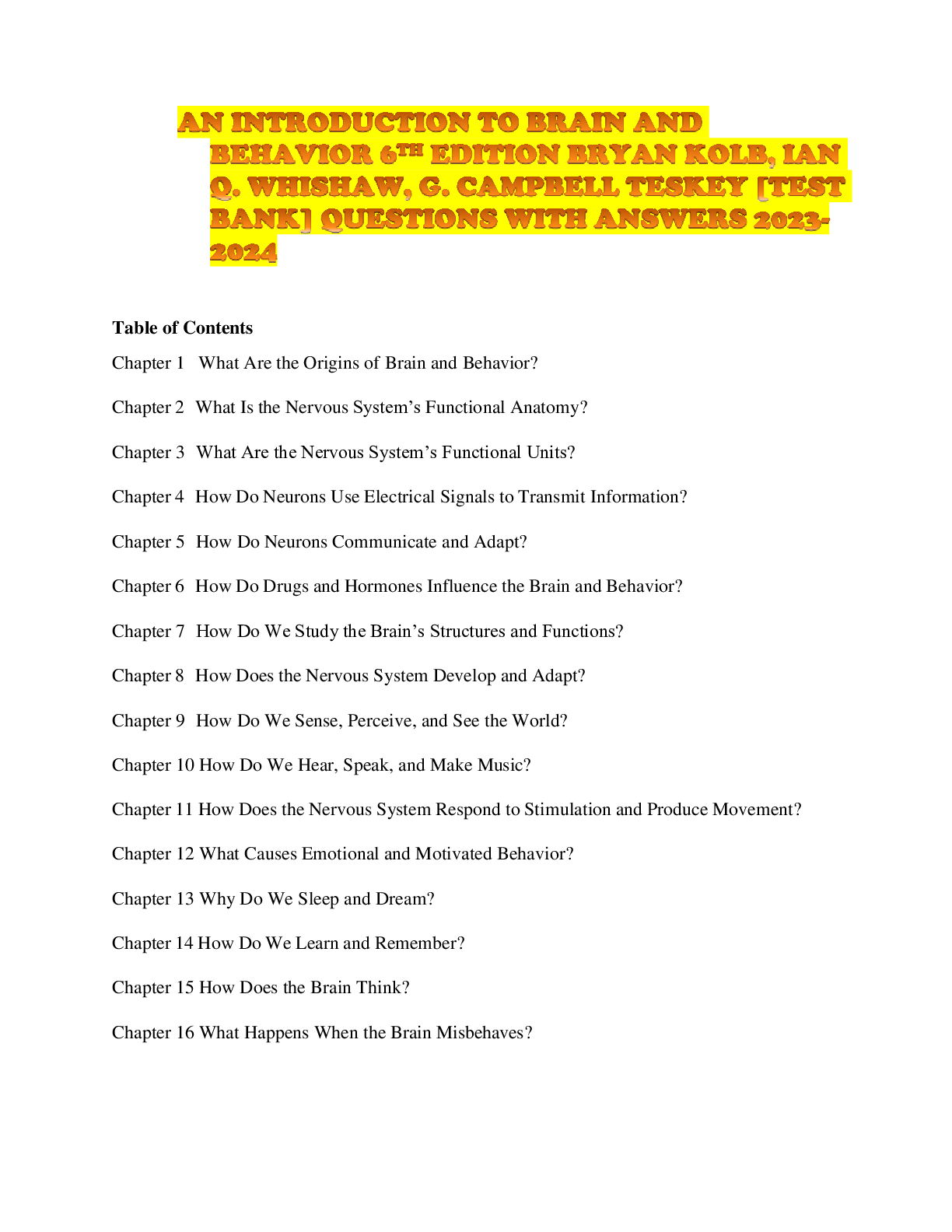Health Care > EXAM > AN INTRODUCTION TO BRAIN AND BEHAVIOR 6TH EDITION BRYAN KOLB, IAN Q. WHISHAW, G. CAMPBELL TESKEY [TE (All)
AN INTRODUCTION TO BRAIN AND BEHAVIOR 6TH EDITION BRYAN KOLB, IAN Q. WHISHAW, G. CAMPBELL TESKEY [TEST BANK] QUESTIONS WITH ANSWERS 2023-2024
Document Content and Description Below
AN INTRODUCTION TO BRAIN AND BEHAVIOR 6TH EDITION BRYAN KOLB, IAN Q. WHISHAW, G. CAMPBELL TESKEY [TEST BANK] QUESTIONS WITH ANSWERS 2023-2024 Table of Contents Chapter 1 What Are the Origins of... Brain and Behavior? Chapter 2 What Is the Nervous System’s Functional Anatomy? Chapter 3 What Are the Nervous System’s Functional Units? Chapter 4 How Do Neurons Use Electrical Signals to Transmit Information? Chapter 5 How Do Neurons Communicate and Adapt? Chapter 6 How Do Drugs and Hormones Influence the Brain and Behavior? Chapter 7 How Do We Study the Brain’s Structures and Functions? Chapter 8 How Does the Nervous System Develop and Adapt? Chapter 9 How Do We Sense, Perceive, and See the World? Chapter 10 How Do We Hear, Speak, and Make Music? Chapter 11 How Does the Nervous System Respond to Stimulation and Produce Movement? Chapter 12 What Causes Emotional and Motivated Behavior? Chapter 13 Why Do We Sleep and Dream? Chapter 14 How Do We Learn and Remember? Chapter 15 How Does the Brain Think? Chapter 16 What Happens When the Brain Misbehaves? Chapter 1 – What are the origins of Brain and Behaviour? 1. Brain abnormalities can be related to: A) 500 disorders. B) 1000 disorders. C) 1500 disorders. D) more than 2,000 disorders. 2. All the nerve processes radiating out beyond the brain and spinal cord as well as all the neurons outside the brain and spinal cord constitute the: A) nervous system. B) central nervous system. C) peripheral nervous system. D) external nervous system. 3. Which is NOT part of the peripheral nervous system? A) sensory receptors in the skin B) connections to motor neurons C) sensory and motor connections to internal organs (e.g., the stomach) D) the spinal cord 4. The set of brain structures responsible for most of our unconscious behaviors is called: A) the cerebral hemisphere. B) the brainstem. C) the cerebrum. D) the cerebellum. 5. The postulation that we make subliminal movements of our larynx and muscles when we imagine was expounded by: A) D. O. Hebb. B) Edmond Jacobson. C) Irenäus Eibl-Eibesfeldt. D) Fred Linge. 6. “Behavior consists of patterns in time” is a definition of behavior expounded by: A) D. O. Hebb. B) Edmond Jacobson. C) Irenäus Eibl-Eibesfeldt. D) Fred Linge. 7. Patterns in time can be made up of: A) movements. B) thinking. C) both movements and thinking. D) neither movements nor thinking. 8. Animals with smaller brains and simpler nervous systems have mostly behaviors, whereas animals with larger brains and more complex nervous systems have mostly behaviors. A) learned; inherited B) inherited; learned C) innate; inherited D) learned; innate 9. Crossbill birds have a beak that is designed to eat pine cones. If we trim the beak, the behavior disappears. This example illustrates: A) fixed behavior. B) flexible behavior. C) learned behavior. D) adaptive behavior. 10. The sucking response observed in newborn human infants is an example of a(n): A) learned response. B) inherited response. C) flexible response. D) adaptive response 11. Which statement is the MOST accurate? A) Nonhuman animals have mostly inherited behavior and are little influenced by learning. B) Humans share many inherited behaviors but are mostly influenced by learning. C) Unlike nonhuman animals, humans share very few inherited behaviors and are mostly influenced by learning. D) Unlike nonhuman animals, humans' behavior is totally learned. 12. The hypothesis that the psyche is responsible for behavior was expounded by: A) Charles Darwin. B) René Descartes. C) Aristotle. D) Socrates. 13. Mentalism is: A) the study of the mind. B) mental imagery. C) the notion that the mind is responsible for behavior. D) another word for mindfulness. 14. The is a nonmaterial entity that is responsible for intelligence, attention, awareness, and consciousness. A) brain B) heart C) mind D) conscience 15. The notion that the mind resides in the pineal body comes from: A) Charles Darwin. B) René Descartes. C) Aristotle. D) Socrates. 16. According to the philosophy of dualism: A) the body influences the mind. B) the pineal body is the mind. C) the pineal body influences the body by directing fluids from the ventricles to the muscles. D) the pineal body is the mind and influences the body by directing fluids from the ventricles to the muscles. 17. Subsequent research indicated that the pineal body was responsible for rather than controlling human behavior. A) vision B) problem solving C) movement D) biological rhythms 18. The difficulty in explaining how a nonmaterial mind can influence a material body is called: A) the mind problem. B) the mind-body problem. C) the brain problem. D) the psyche problem 19. Descartes's followers would argue that: A) the mind and the body are separate at birth. B) humans and very few other animals have minds. C) young children do not have minds. [Show More]
Last updated: 2 months ago
Preview 1 out of 330 pages
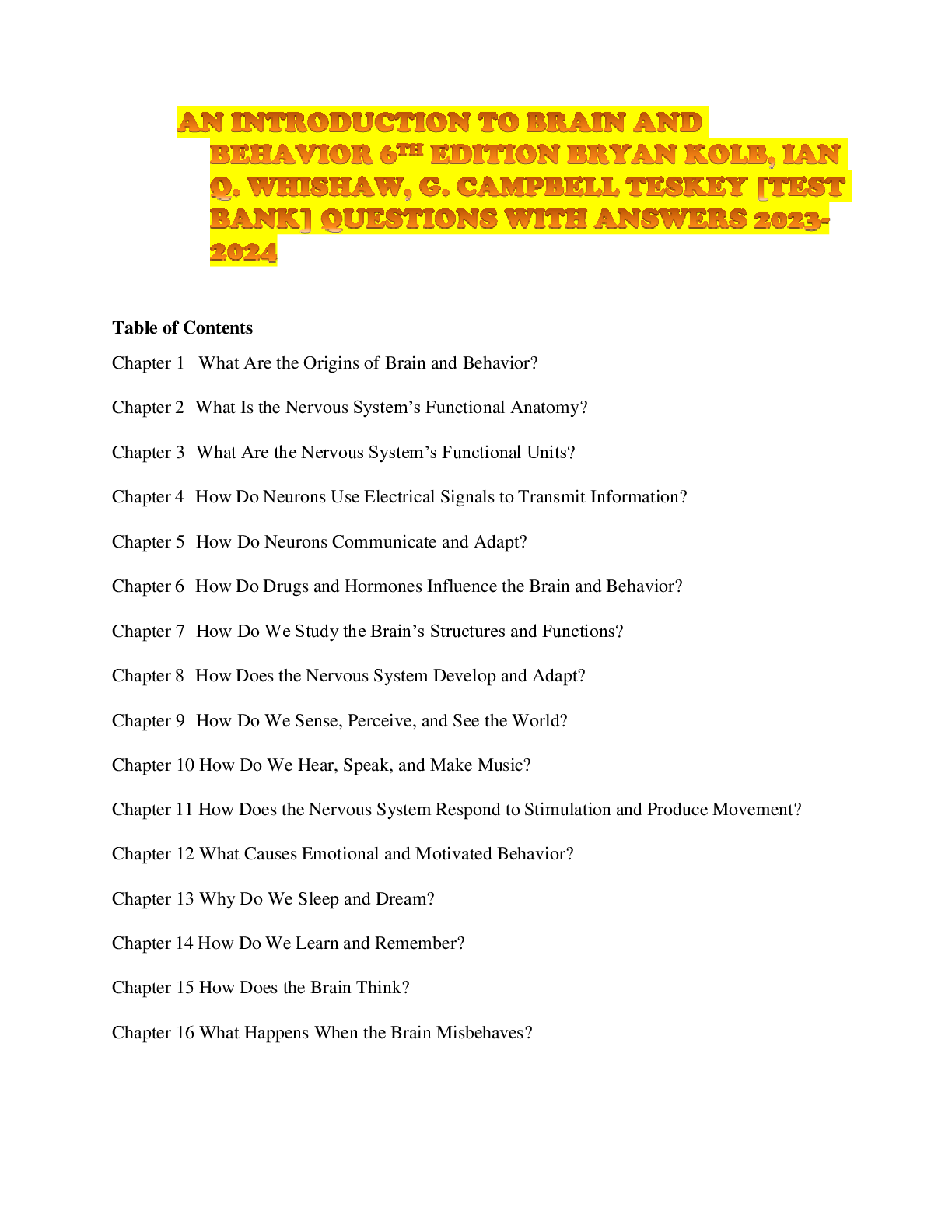
Reviews( 0 )
Document information
Connected school, study & course
About the document
Uploaded On
Mar 09, 2024
Number of pages
330
Written in
Additional information
This document has been written for:
Uploaded
Mar 09, 2024
Downloads
0
Views
19

